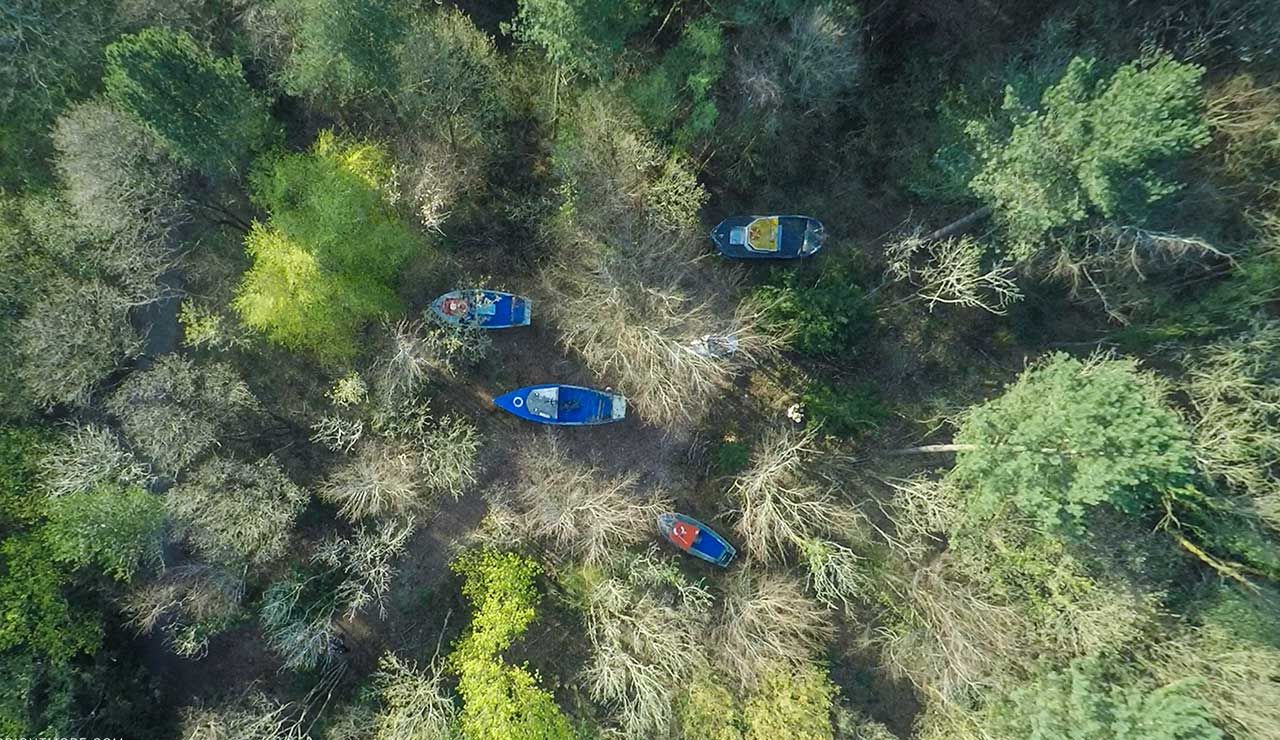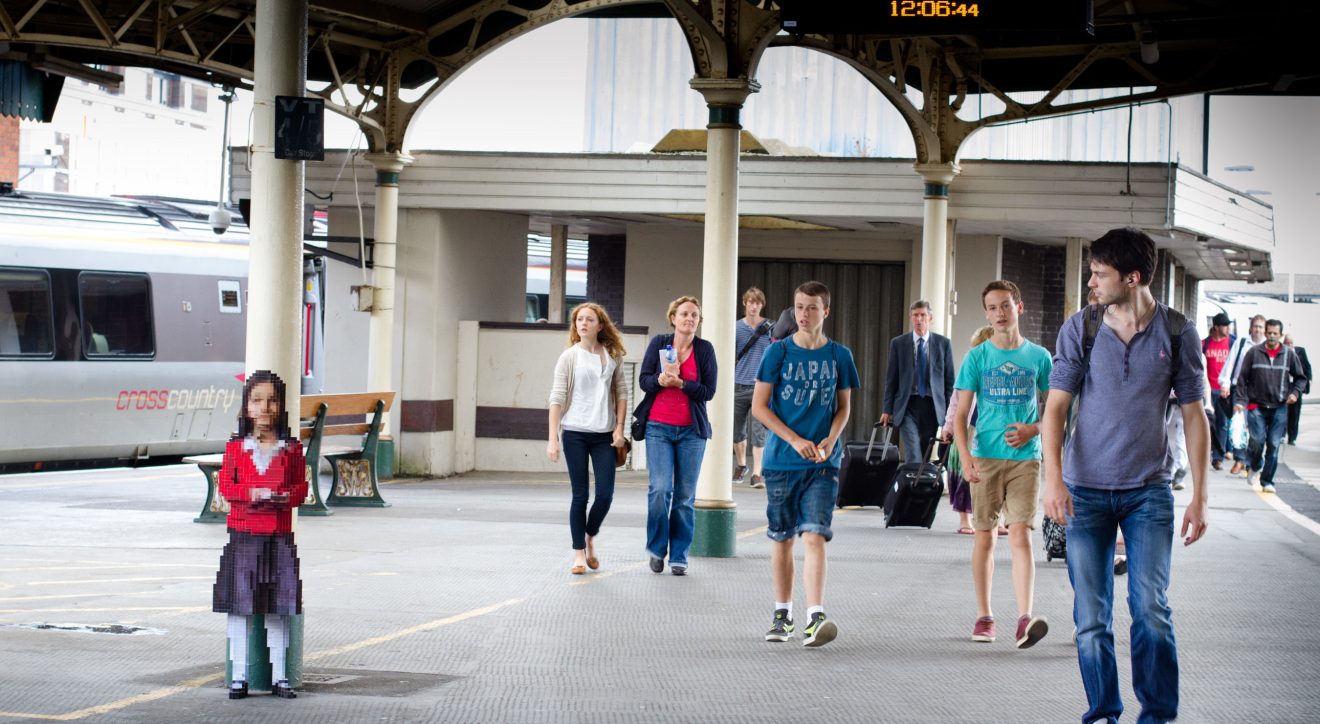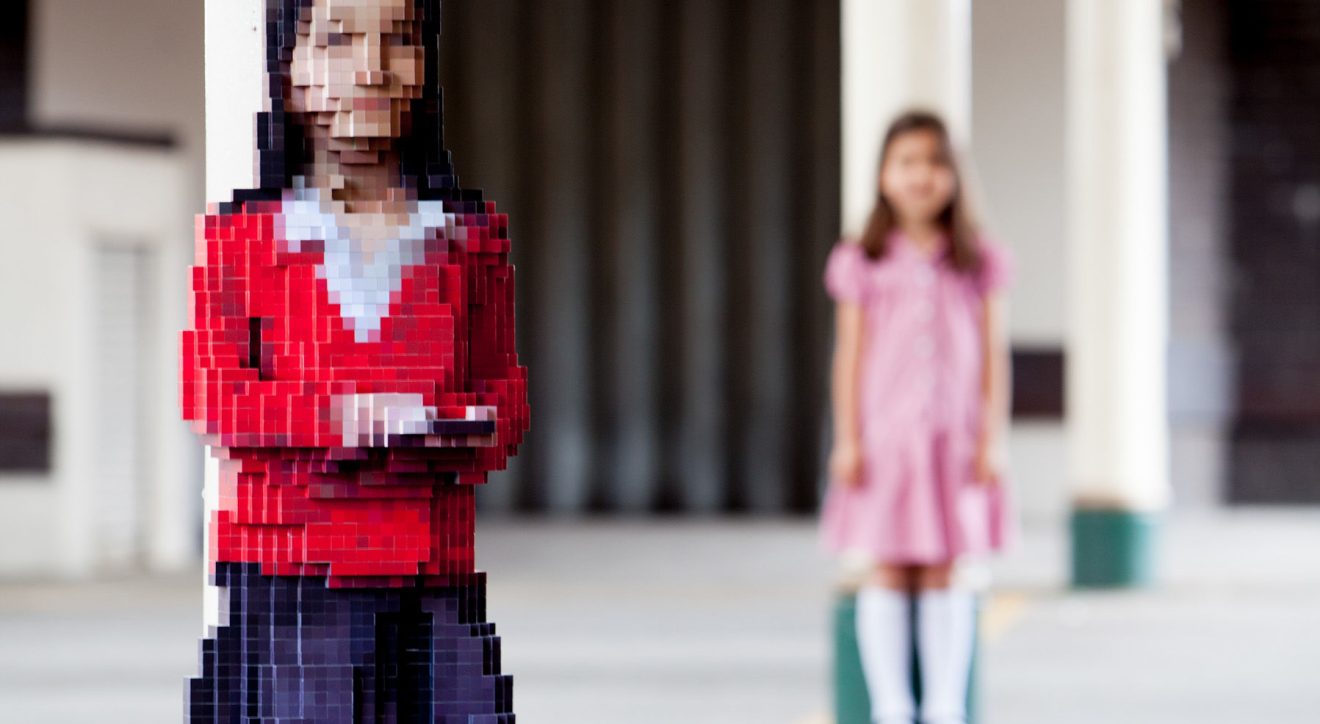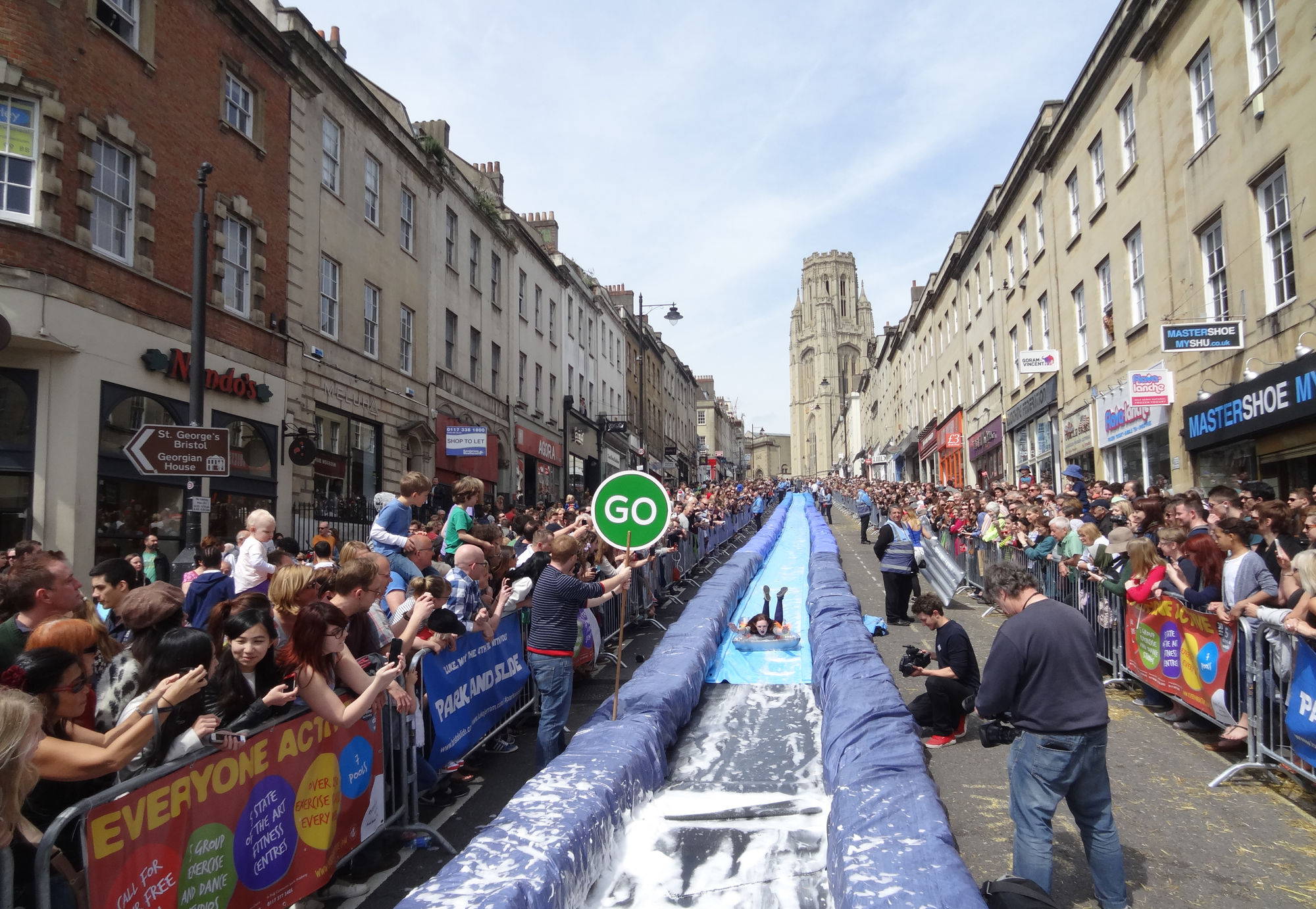
Synopsis
A young girl can be seen standing alone at the end of the train station platform. Who’s she with? Is she travelling alone? Engrossed in her own world, she is still and focuses on the phone she carries. As a concerned member of the public approaches, her form appears to digitize and fragment into cubes. Is this some form of reverse augmented reality?
Maya is a pixelated sculptural installation which acts as a three-dimensional pixelated portrait. The work was installed on Platform 1 of Bristol Temple Meads train station from 2013-2015. As with a heavily pixelated two dimensional image made of squares, from a distance the sculptures can be easily read. As the viewer gets closer the object appears to fragment into cubes. The figure is modeled after the artist’s own daughter by the same name. Using the camera and software in an Xbox Kinect to capture and create his ambitious project, Jerram explored the modern world we’ve come to live in where our daily lives are constantly documented and shared digitally.
Every occasion of our lives now seems to be documented with the plethora of cameras we carry around with us. Images are shared and distributed online for our family, friends and the public to see. Unsure of the implications of this life online, will photos of us remain on the internet forever? Or will they simply get lost and become anonymous in the billions of images we upload each year? With the permission of Luke Jerram’s daughter, this portrait raises some of these issues.
As Jerram has stated, “From the age of 3 my daughter Maya could use an iPhone. For her the technology was like a pencil, just another everyday tool to be used. Born into this world, for her, the digital revolution and the speed of technological development is not yet apparent.”
This project has stemmed from Jerram’s ongoing research of visual perception and optical illusions. The fact that he is colourblind has given him a natural interest in exploring “the edges of perception”.

“There was little to distinguish the child from the people surrounding her but as I moved closer I watched the face become distorted and the body become a little boxy. This most amazing creation seems bewildering even up close. The man next to me was filming her from every position and I could see why; she looks different from all angles. It’s a strange sight to see this pixelated creature made from small cubes; as much beguiling as mesmerising. I hated to leave her.”Story from a passenger
Process
“I had the idea to create pixelated sculptures about 10 years ago. Back then I tried to make the artworks using cubes of painted wood, but the results were disappointing. The opportunity arose this year to make an artwork for Bristol Temple Quarter using more up to date technologies, which a decade ago weren’t financially accessible”.
To make this artwork Maya was scanned using an Xbox kinect. Her head was scanned at the Machine Vision Laboratory (MVL) within the University of West of England. From there the body scan was then pixelated into cubes known as voxels.Then the model was created from precisely (waterjet) cut, sheets of aluminium. Over 5,000 small, 12mm square coloured stickers were then printed and painstakingly fixed onto this aluminium surface.
Printing was completed at the Centre for Fine Print Research (CFPR), University of West of England where Luke Jerram is a Senior Research Fellow.
Public Reaction
During the day, when there were many people around, she blended into the crowd. At night though, she looked really vulnerable, out of place and alone. A train was recently held up when the train driver saw a vunerable young girl standing at the end of the platform. Security were called but the problem was quickly resolved when staff explained that the girl was just a sculpture.
Maya became slightly wobbly, caused by dozens of people hugging the sculpture. Consequently, the artwork had to be re-bolted to the ground.
A story from the station manager….“On my first day of work, a member of the public reported seeing a lone girl at the end of the platform. I reassured them, that I’d keep an eye on her. After 2&1/2hrs of checking, I finally reported the girl to my boss, who suggested I went up to her to make sure she was ok! Needless to say, I was very embarrassed to find that Maya was in fact a statue rather than a lost girl!”
Story from a passenger…“There was little to distinguish the child from the people surrounding her but as I moved closer I watched the face become distorted and the body become a little boxy. This most amazing creation seems bewildering even up close. The man next to me was filming her from every position and I could see why; she looks different from all angles. It’s a strange sight to see this pixelated creature made from small cubes; as much beguiling as mesmerising. I hated to leave her.”
Luke Jerram’s multidisciplinary practice involves the creation of sculptures, installations, live arts projects and gifts. Living in Bristol but working internationally since his career began in 1997, Jerram has created a number of extraordinary art projects which have excited and inspired people around the globe. He is currently Visiting Senior Research Fellow at CFPR, University of West of England.
Jerram is known worldwide for his large scale public engagement artworks. His celebrated street pianos installation ‘Play Me, I’m Yours’ has been presented in over 55 cities so far, reaching an audience to date of over 10 million people around the world. Launched by the French Minister of Culture in Paris and Mayor Bloomberg in NYC, the installation has received press coverage in almost every newspaper and television station around the globe.
In 2000 Jerram taught in war torn Mostar, Bosnia and he continues to teach and lecture both in the UK and abroad. His most notable lectures include those at The Banff Centre, ROM – Royal Ontario Museum, ICA – Institute of Contemporary Art, Corning Museum, The Wellcome Collection, Royal College of Art, The Ruskin School of Art, University of Washington, and Nagoya University.
Maya was commissioned as part of a series of projects entitled the ‘Bristol Temple Quarter Commissions’ coordinated by Watershed, Knowle West Media Centre and MAYK, with support from Bristol City Council and The Arts Council of England.
Centre for Fine Print Research (CFPR) University of West of England.
Gary Atkinson at the UWE Machine Vision Laboratory (MVL)
CAD – Richard de Lancey – Nu Desine
Paul Muncaster and Joss Murray – technicians


